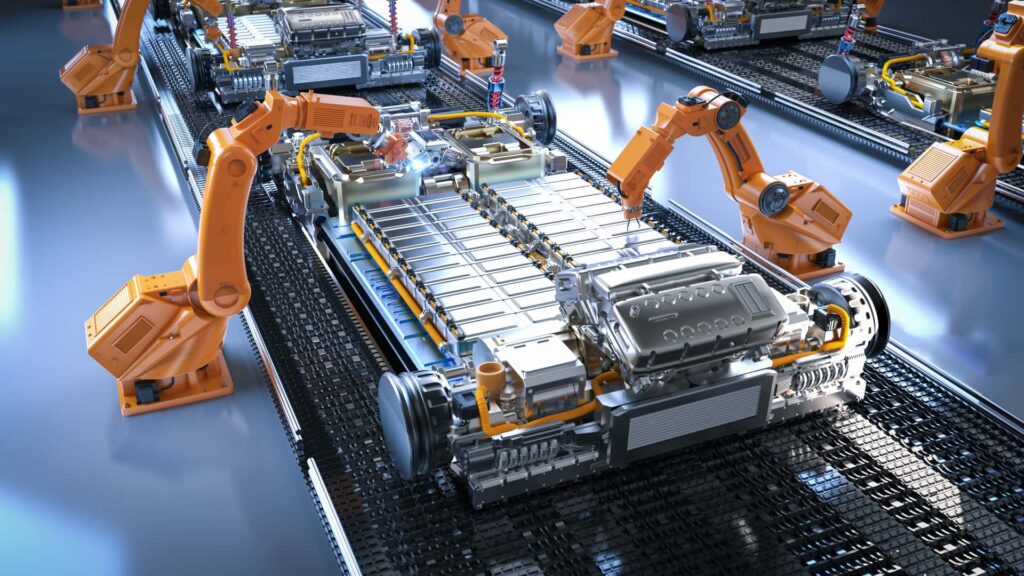
In countries where electric cars have been successfully democratized, like China, for example, affordability is inextricably linked to low raw material prices. In the U.S., where the road to electrification is far more complex, the impact of increasingly lower raw material prices is expected to truly materialize by the end of the decade, new research by the International Council On Clean Transportation has revealed.
EV batteries are expensive. They require critical minerals like lithium, nickel, manganese, and graphite among others to function. Lithium’s demand has skyrocketed in the past few years. So much that it’s often termed “white gold.” Growing environmental concerns around fossil fuels and new policies have caused a global white gold rush—governments and OEMs are scrambling to extract and refine lithium for EVs, and other industrial applications.
Get Fully Charged
EV batteries can only be cheap if there’s an abundant lithium supply.
Lithium is a key ingredient in EV batteries. Currently, it is in limited supply. However, countries around the world are scrambling to increase their extraction and refining capacities to drive down the costs of batteries, and hence EVs.
Currently, the world’s lithium demands are mostly met through open-pit mines in Australia, and evaporation ponds in South America, from what’s called the “lithium triangle” comprising Argentina, Bolivia, and Chile. But that could change in the coming years. The U.S. is significantly increasing its lithium extraction and refining capacities. ICCT data showed that over 100 lithium mining and refining projects are underway in the U.S. and countries it has “existing and potential” trade agreements with combined.
And now, we have some numbers to showcase just how impactful boosting local lithium production would likely be.
One of ICCT’s estimates suggests that the U.S. would require about 340 kilotons per annum (ktpa) of lithium carbonate equivalent by 2032 for light-duty EVs. What the U.S. and its trade partners are expected to produce is several times more than that. By 2025, extraction and refining capacities are projected to be at 1,310 ktpa and 1,030 ktpa, respectively. By 2032, both these capacities would increase to over 2,000 ktpa.
Currently, the U.S. accounts for less than 2% of the world’s lithium supply—that is expected to grow to 17% by 2032.
While the figures above denote global lithium output, the U.S. is expected to secure a level of supply that would far exceed demand. Even by the most conservative estimates, the lithium supply for light-duty and commercial EVs will be higher than the demand—a ballpark estimate is that the demand would represent between 17%-33% of the announced supply, according to the ICCT.
Sure, the supply of other critical minerals like nickel, manganese, and graphite among others would also need to increase in proportion. If and when that happens, it could lead to more affordable batteries, and hence more affordable EVs. By one estimate, pack level costs are expected to decline from $122 per kilowatt-hour in 2023 to about $91/kWh in 2027, and $67/kWh in 2032.
This means an average new EV with 300 miles of range would cost the same as an equivalent gas-powered car by 2028-2029, as per the ICCT.
That timeframe appears in the distant future, but again, battery plants are still coming up, and it would likely take time before they’re running at full capacity. Also worth noting is that these projections are based on the Environmental Protection Agency’s currently proposed 2027-2032 multi-pollutant standards that require 67% of new light-duty vehicles to go electric by 2032.
The Biden administration intends to water down the EPA’s guidelines—after months of lobbying by auto groups, dealers, and OEMs—which could also alter the rate at which battery prices fall, and hence impact how soon you could buy an EV that perfectly matches your budget and needs.

